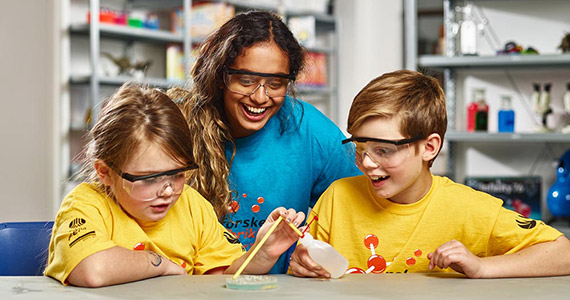STEM
How to Get Students Excited About STEM
by Hanne S. Finstad, PhD and founder of Scientist Factory.
Many countries aim to get people interested in STEM. We need the children of today to want to become the scientists, entrepreneurs, and engineers of tomorrow. But STEM recruiting has turned out to be quite a challenge for many countries. Yet, the solution is very simple. As it turns out, joy is all you need.
Interest in the natural sciences starts with positive emotions. Studies repeatedly show that joy is essential to learning STEM. In one example, Australian scientists sought to find out why some chose a career in engineering and science. The researchers interviewed 400 high school students about how they chose subjects. The results showed that adult influence didn’t matter much. It turned out that the most important factor was whether the subject was fun. Those who chose to not pursue the natural sciences found STEM boring. Whether or not the choice of subject opened up exciting career opportunities also played a role.

STEM is meaningful
An international study in which youths were asked about the extent to which they found STEM fun and whether or not they would like to learn more had similar findings. The youths’ answers confirm that emotions are essential when it comes to learning and STEM. Those who found the natural sciences fun were also the most interested. The engagement was the strongest in those who found STEM meaningful, something capable of creating positive change in the world.

Interest in STEM begins at a young age
At what age, then, are children and youth the most likely to become excited about STEM? When American scientists interviewed 8000 college students, they found that many people become drawn to STEM in early childhood. Experiences with nature and using building toys appear to be especially important. Exciting books, trips to museums, and science clubs also made a lasting impact on student interest.
Students at Scientists Factory’s summer schools and after school programs tell the same story. Many became interested in STEM as young as five. And our courses strengthen their interest, with 99% of children saying that they both had fun and learned a lot from our programs. Practical experiments such as making slime and ice cream, and exploring colours and electricity, create positive emotions.

A lasting impact
Positive experiences with science in childhood lead to a greater interest in STEM. But do such experiences have a lasting effect on STEM excitement? In order to answer that question, Scientist Factory has conducted three rounds of interviews with students who attended our programs ten years ago and are now grown up. The results have been consistent every time. We found that 90% remember our courses as motivating and fun, and 55% are still very interested in STEM. Of this latter group, one third say that Scientist Factory’s program was an important part of this experience. A former student says:
“Scientist Factory’s courses were my first meeting with STEM and scientific experiments. We encountered lots of exciting things that we had never seen before such as dry ice. It was very exciting and fun to be in a place where it was cool to know a thing or two about science!”
Our most exciting finding from these questionnaires has to do with career choice. Almost 20% of former students report that Scientist Factory had an impact on their choice to get an education within STEM as adults. Doing exciting experiments and other activities as children thus has a lasting effect that may affect future career choices. Or, as one of our former students says:
“I have applied to study engineering at universities in Great Britain and the United States. I think my decision was influenced by early exposure to experiments and science at Scientist Factory. Enthusiastic teachers and the opportunities I had to make my own discoveries showed me that science and technology is fun.”

Joy is at the center of Scientist Factory’s methods
Scientist Factory has worked hard to create positive associations and joy in our programs ever since we started in 2002. It is uplifting and motivating to see that our strategy finds support in research. So far, more than 100 000 children have attended our courses. Inspiring joy has been a guiding principles in all the activities we have developed. Going forward, joy will continue to be a foundational part of our pedagogy.
Sources
- Students`emotions and academic engagement: Introduction to the special issue. Contemporary Educational Psychology, vol 36, p 1-2, 2011
- How situational is situational interest? Investigating the longitudinal structure of situational interest. Contemporary Educational Psychology, vol 43, s 39-50, 2015
- Student engagement with science in early adolescence: The contribution of enjoyment to students` continuing interest in learning about science. M Ainley et al, Contemporary Educational Psychology, vol 36, p 2-12, 2011
- Why school students choose and reject science: a study of the factors that students consider selecting subject. TA Palmer et al, International Journal of Science Education, vol 39, p 645-662, 2017
